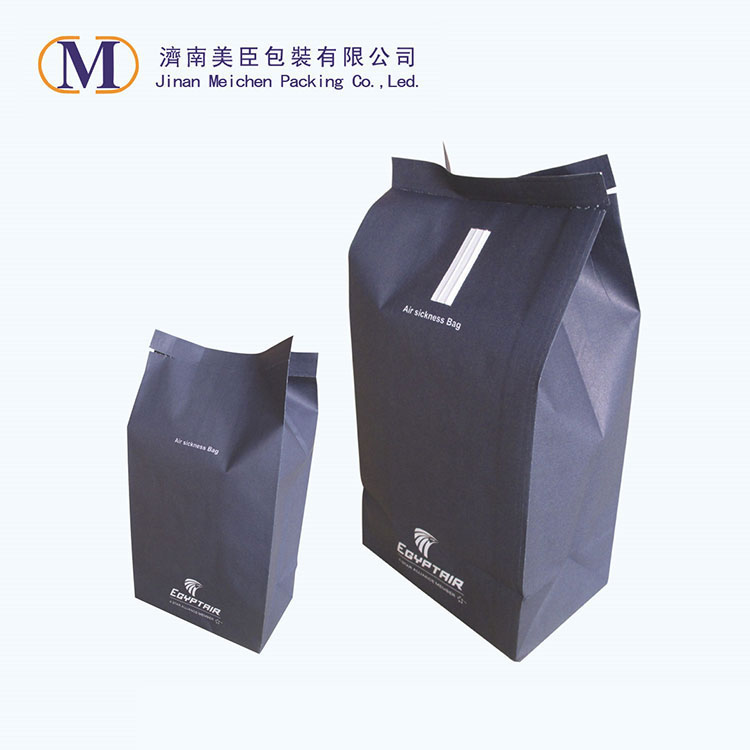Ensuring Effectiveness and Reliability: Key Considerations in Designing Disposable Airsickness Bags
2024-03-15
Air travel is a marvel of modern transportation, enabling millions of people to traverse the globe swiftly and efficiently. However, for some passengers, the experience can be marred by the discomforts of motion sickness. In such moments, https://www.meichenpackings.com/disposable-airsickness-bags.htmlhttps://www.meichenpackings.com/disposable-airsickness-bags.html serve as a crucial resource, providing a convenient and hygienic solution for managing nausea and vomiting while in flight.
Behind the seemingly simple design of these bags lies a meticulous process of engineering and manufacturing aimed at ensuring their effectiveness and reliability. Let's delve into the key considerations that guide this process, highlighting the measures taken to uphold safety, convenience, and passenger comfort.
1. Material Selection: The choice of materials is paramount in designing disposable airsickness bags. These materials must strike a balance between durability, flexibility, and cost-effectiveness. Typically, high-density polyethylene or biodegradable plastics are favored for their strength and resistance to leakage. Additionally, selecting materials that are easy to clean and sanitize is essential to maintain hygiene standards.
2. Regulatory Compliance: Disposable airsickness bags are subject to stringent regulations and industry standards to ensure their safety and effectiveness. Manufacturers must adhere to guidelines set forth by aviation authorities and regulatory bodies, addressing aspects such as bag capacity, construction, labeling, and disposal protocols. Compliance with these standards is non-negotiable to guarantee the bags' suitability for use in aircraft cabins.
3. Ergonomic Design: Design considerations extend beyond mere functionality to encompass ergonomic factors that enhance user experience. The size and shape of the bag must facilitate easy handling and disposal, even in cramped seating conditions. Features such as secure closure mechanisms and reinforced seams contribute to the bag's reliability, preventing leaks or spills during use.
4. Accessibility and Visibility: In moments of distress, passengers must be able to locate and access airsickness bags quickly. Strategic placement within the seat pocket or seatback ensures ready availability, while bright colors or prominent labeling enhance visibility. Clear instructions printed on the bag guide users on proper usage, minimizing confusion or hesitation during emergencies.
5. Environmental Sustainability: With growing concerns about environmental impact, manufacturers are increasingly exploring eco-friendly alternatives in the design of disposable airsickness bags. Biodegradable materials and recyclable packaging options help mitigate the bags' carbon footprint, aligning with industry-wide efforts to promote sustainability and reduce waste.
6. Quality Assurance: Rigorous quality control measures are integral to the manufacturing process, safeguarding against defects or inconsistencies that compromise the bags' performance. Thorough testing protocols assess factors such as seam strength, puncture resistance, and odor containment, ensuring that each bag meets stringent quality standards before reaching the market.
7. Collaboration with Airlines: Manufacturers often collaborate closely with airlines to tailor disposable airsickness bags to their specific requirements and branding preferences. Customization options may include the incorporation of airline logos, colors, or promotional messages, fostering brand recognition and cohesion within the cabin environment.
In conclusion, the design and manufacturing of disposable airsickness bags demand meticulous attention to detail and a commitment to excellence. By addressing key considerations such as material selection, regulatory compliance, ergonomic design, and environmental sustainability, manufacturers can uphold the highest standards of effectiveness and reliability. Ultimately, these unassuming yet indispensable inflight companions play a vital role in enhancing passenger comfort and safety, ensuring smooth skies for travelers around the world.



